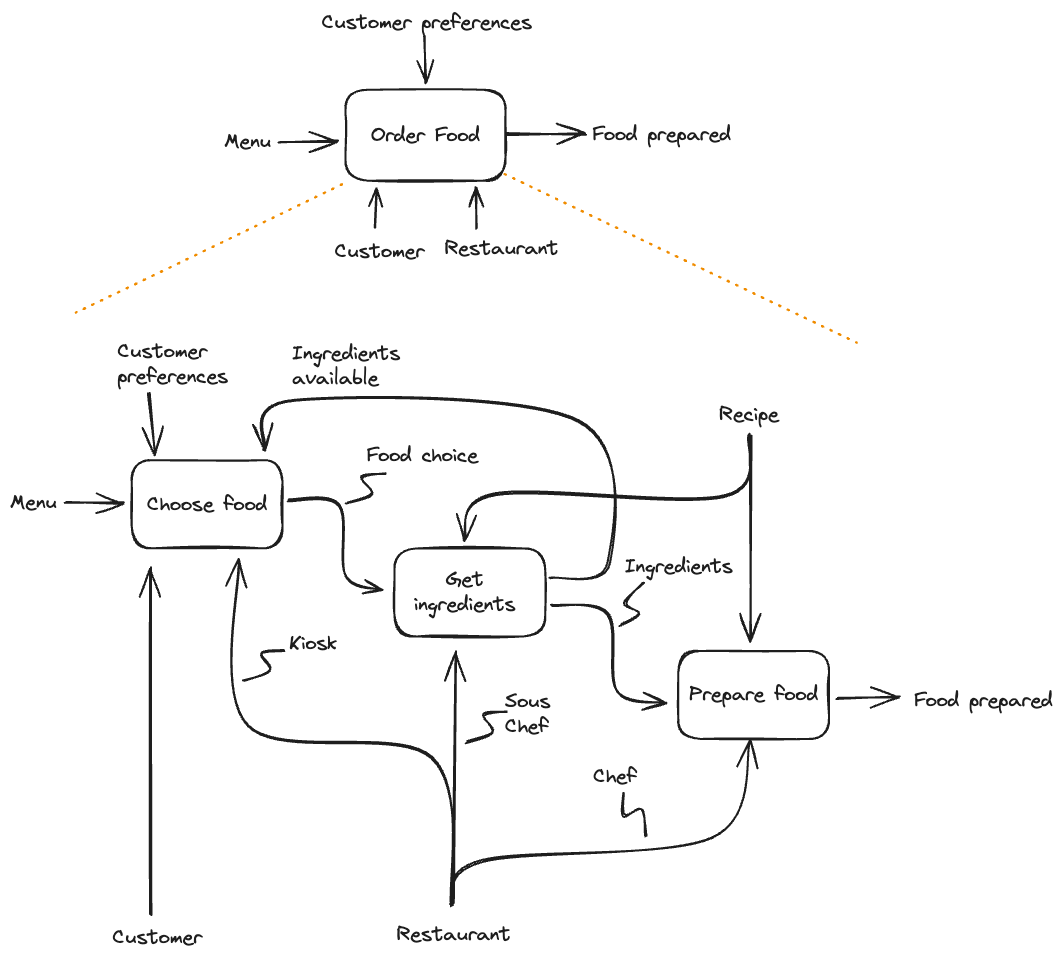= this.summary
IDEF0’s big killer feature is its simplicity… but sometimes it’s possible to create complexity in the name of “keeping it simple”.
Tooling
The lack of good IDEF0 Tools sucks. IDEF0 was designed to work with pen & paper, but paper is easily outmoded by digital methods that enforce Referential Integrity and allow for hyperlinks via URIs to drill into. You could represent everything there is to say in an IDEF0 model in a relatively simple OPL-like language. This would be useful and is easily technically possible… but (almost) no tools exist for this.
Conditionals
Conditional statements are probably why IDEF0 claims itself to be a “functional” modeling language and not a “process” modeling language. They are, however, ridiculously common. People will break conventions to insert conditionals.
I think that conditionals are also where you start to get “too much rope” and hang yourself with model complexity.
Logical Operators
When one function box has outputs that go to multiple “next” function blocks, there’s no mechanism in place to say if the function completion “activates” both, either, or exactly one of the next functions. To me this is a massive gap in IDEF0 in the service of functional modeling. This, too, is perhaps more “process” than “function” - but I’d argue IDEF0 as a language is harmed by the lack of ”&”/“or”.
Note: these are featured in IDEF3.
Arrow Relations
This is where you really start to get into the weeds, but it would be nice to be able to relate or expand upon the relationship between the arrows themselves. If an arrow forks into multiple arrows, this implies a “Composed of” relationship (or something like it), but it would be nice to have and affordance for specifying the relations between the arrows.
I can’t imagine this being done within the IDEF0 diagram framework, but it would be a good (/necessary) thing to do in a full system model using IDEF. This is probably what IDEF3 is meant to cover.
Small Example
Small example I whipped up to illustrate some deficiencies.

Example Issues:
- Tooling didn’t force me to put function numbers in my boxes, or tunnel the recipe/ingredients
- What does “Food choice” entail? Is that a digital dataset?
- Are the Sous Chef and Chef necessarily different people?
- The output of “Get ingredients” is split by whether or not the ingredients for the recipe chosen are available, but that important and simple distinction is hidden due to a lack of a mechanism for conditionals
Source
- Personal usage & analysis of others
- This dude’s IDEF0 tool